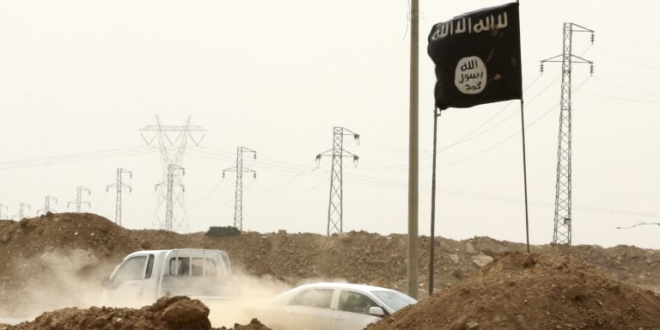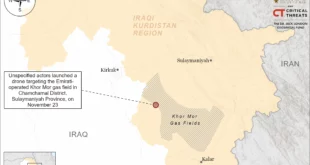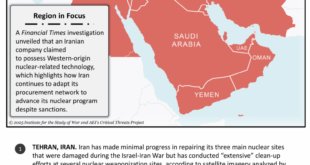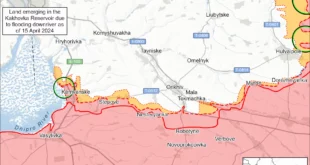Islamic State (IS) in Syria aims to ignite sectarian violence, fragment national cohesion, and undermine the legitimacy of the transitional government.
Lagging integration of the Syrian Democratic Forces (SDF) into the Syrian military and U.S. troop withdrawals have created a strategic environment ripe for further exploitation.
Through IS’s vast propaganda ecosystem, the transitional government has been routinely targeted, and foreign fighters aligned with Hayat Tahrir Al-Sham have been coaxed to join IS.
Foreign powers in Syria, including Russia, Iran, and Israel, working at cross-purposes could provide more seams for IS to exploit.
After a steep drop in operational tempo in late 2024 and early 2025 when the Assad regime imploded, the Islamic State (IS) in Syria has since increased its attack frequency month over month, targeting both security forces and soft targets in territories controlled by the Kurdish Syrian Democratic Forces (SDF) and the Syrian transitional government. While Syria now has a legitimate opportunity to stabilize the country following decades of repression, economic isolation, external intervention, and humanitarian crises, IS has leveraged this transitional period to reposition itself after the staggering blow dealt by the collapse of the Assad regime, which had long served as a rallying cry for recruitment. IS’s campaign in Syria aims to ignite sectarian violence, fragment national cohesion, and undermine the legitimacy of the transitional government. Lagging integration of the SDF into the Syrian military, U.S. troop withdrawals, and persistent IS propaganda targeting the new Syrian government and foreign recruits have created a strategic environment ripe for further exploitation. Throughout its existence, IS has proven time and again that it remains capable of taking advantage of opportunities to resurge, exploiting the gaps and seams in governance, border security, and counterterrorism cooperation to recruit new members and further radicalize its support base.
On May 18, IS struck the new Syrian government successfully for the first time since the Assad regime was toppled in December of 2024. Targeting a security post in the government-controlled part of Deir ez-Zor governorate, the attack came after numerous counterterrorism operations by the new government against IS plots and cells. Most notably, in January, the government led by Ahmed Al-Sharaa foiled a plot targeting the Sayyidah Zaynab shrine near Damascus – a Shia holy site that had been attacked by IS before, most fatally in 2016. If that attack would have succeeded, it would have provided IS with an enormous propaganda boost, and in many ways was similar in its ambition to the infamous February 2006 al-Qaeda in Iraq (AQI) attack on the al-Askari Mosque located in Samarra, one of the holiest sites in Shia Islam. The attack ratcheted up sectarian violence between Sunnis and Shias in Iraq, which was one of the primary objectives of AQI chieftain Abu Musab al-Zarqawi.
At least a dozen plots have been foiled since January, including plans to bomb religious sites and an assassination plot targeting Syrian President Ahmed al-Sharaa. While IS has stepped up its campaign against the new government, it is the SDF-controlled northeast that continues to bear the brunt of attacks. According to a dataset aggregated by Syria expert Charles Lister, 94 percent of IS attacks in Syria in 2025 have been in the SDF-controlled territory.
As the full integration of the SDF into the Syrian military lags, and uncertainty remains about the future administration of detention facilities holding IS fighters in the northeast, there are myriad governance vacuums for IS to exploit. Some sources have suggested that the U.S. requires the SDF to be integrated into Syria’s military by the end of August, before the original aspirational deadline of the end of 2025. In the meantime, seams between SDF-controlled territory and government-controlled territory can be exploited by IS. This may manifest as an increased attack tempo but also as improved logistical networks and smuggling routes, largely disrupted in U.S. airstrikes in December 2024 after the Hayat Tahrir Al Sham (HTS) toppled the regime.
The U.S. started has its drawdown of troops from northeastern Syria in April, with its eight bases now being reduced to one. While U.S. President Donald Trump appointed Türkiye Ambassador Tom Barrack as envoy to Syria in late May, this should not be perceived as a recommitment to more engagement with Syria. Instead, as has been the case with the ebbs and flows of U.S. troop presence in Syria since 2015, counterterrorism efforts will be the priority, with the transitional government expected to lead the combat against a resurging IS. The response by the transitional government – as the SDF is integrated into the military – will be essential in securing the prisons holding approximately 10,000 captured IS fighters, as well as the 40,000 IS-linked women and children in the al-Hol and al-Roj detention camps. As IS continues to grow emboldened, the humanitarian conditions in the camps deteriorate, and the ideologies in these prisons have likely hardened even further, the group may target the prisons and camps, seeing this as an opportune time to facilitate a jailbreak, as it did in 2022. Not only would a jailbreak release battle-hardened fighters, but it would also create much desired propaganda used to recruit new fighters.
Furthermore, policies promoted by the new government perceived by some as moderate or as pandering to Western interests are already being exploited in IS propaganda. This is particularly concerning if such narratives resonate with individuals within government or military ranks who are sympathetic to more hardline views. Foreign fighters who previously fought alongside HTS against the Assad regime and have since been integrated into the Syrian military may be especially vulnerable to this propaganda. Syria analyst Hussam Hammoud has noted that IS-linked Telegram channels have capitalized on public outrage over the new government’s release of former Assad regime militiamen.
Through Islamic State’s vast propaganda system, including its weekly magazine An-Naba, the transitional government and the SDF have been routinely targeted, equated with the former regime, and painted as U.S. puppets. In one spread in a recent issue of An-Naba, foreign fighters in Syria were directly addressed, reminded that the invitation to join IS still stands, and warned to not be a pawn dropped by al-Sharaa for international approval.
While the crosswinds gathering across the region provide al-Sharaa with the chance to turn around Syria’s recent history of misfortune and misery, there are a number of factors, both domestic and foreign, that could still spoil Damascus’ chances for a brighter future. Continued sectarian violence between the transitional government and the Alawite community will remain a major issue for the foreseeable future. Moreover, there will be a range of external actors with an interest in destabilizing Syria for their own gain. The Syrian government has intercepted numerous Iranian made/linked weapons shipments bound for Hezbollah, including artillery rockets. Given how significantly Hezbollah has been attenuated over the past year and a half, Tehran is desperate to resupply the group and retain its toehold in Syria. Israel too, will remain active in Syria, launching airstrikes with impunity against a range of targets, not just in southern Syria but across the country. Russia is also seeking to maintain its military presence in Syria in an effort to secure access to the eastern Mediterranean. All of these exogenous variables further complicate the effort to counter IS, since some countries, even those with a vested interest in Islamic State’s demise, are working at cross-purposes, and the competing interests could provide an opening for the jihadists.
 Eurasia Press & News
Eurasia Press & News



